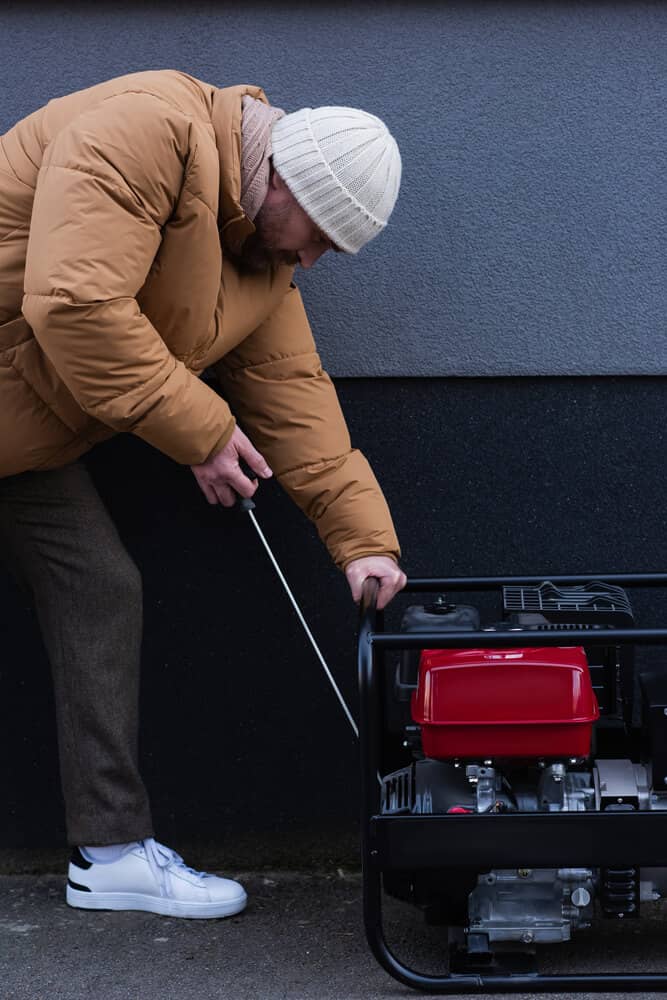While the need for an electric generator is uncommon in urban areas, it can become crucial equipment during a power outage. Therefore, whether you’re suffering more frequent blackouts or you’re planning to spend some time away from the frenzy of urban life in a remote cottage, you may need to charge your electronics using a generator.
So, let us discuss if a generator can be used to charge phones or power banks.
Generators come in various sizes and types, and each one is suited for a specific application. In general, this device is capable of generating enough electricity to run a whole house or even factories, ships, and other enormous machines. However, while we all know that using a generator to power high-power electronics is generally safe, we have concerns about sensitive electronics such as TVs, desktop computers, phones, and power banks.
As a result, we recommend portable inverter generators for powering these devices due to their reliability in providing steady, high-quality electricity.
Additionally, it’s important to note that power must be regulated to charge power banks, and phones safely. There are two scenarios for using a generator: either plug the device into the inverter generator’s outlet or connect the generator directly to the house’s inlet box before plugging the gadgets into the house’s wall socket.
Therefore, as long as the electricity is regulated, it makes no difference in the scenario you choose or what type of equipment generates the power. Apart from generators, chargers, phones, and power banks, all have regulators to prevent possible damage.
However, it is worth mentioning that these devices are capable of withstanding specific levels of surges and voltage fluctuations, which is why we recommended standby and inverter generators in the first place.
Keep in mind that while protections are in place to avoid power surges, the use of inverters and standby generators does not eliminate the possibility of small power surges.

Charging Lithium Batteries with a Generator. Can it Be Done?
Yes, a generator can be used to charge lithium batteries. However, as previously mentioned, the power output of basic portable generators fluctuates. Therefore, as long as the generator is not used to charge the batteries on a regular basis, there is no reason to be concerned; otherwise, the battery charger’s circuits may be damaged.
But even if the charger gets fried, the batteries will remain safe. Furthermore, it is also possible to increase the quality of electricity supplied to equipment by using a line conditioner.
How Long Does it Take to Charge a Phone or Power Bank Using a Generator?
This is dependent on two factors: the generator’s output and the availability of clean power. By “clean power” we mean power that is consistent in voltage and frequency, with low harmonic distortion.
If the generator’s output matches the line voltage and it is capable of producing clean, regulated electricity, your phone and power bank will charge at the same pace as the line voltage.
As with basic portable generators, inverter generators produce 120 volts at 60 Hertz. But, due to the additional stages in the electricity production process, an inverter generator’s current is significantly more steady and consistent.
In other words, harmonic distortion is reduced, which is why inverter generators are referred to as ‘clean power.’ The quality of energy generated by inverter generators is equivalent to that provided by your main electrical supplier. Therefore, If the generator is unable to provide clean power, the charging speed will be reduced due to the fluctuations.
Is it Safe to Use a Generator For Charging Batteries?
Using a generator to charge batteries can be safe, provided certain precautions and guidelines are followed:
- Correct Generator Size: Ensure the generator is appropriately sized for the charging task. Overloading a generator can cause damage to both the generator and the batteries.
- Proper Voltage and Current: The generator must provide the correct voltage and current for the batteries you are charging. Using incorrect settings can damage the batteries or cause safety hazards.
- Ventilation: Generators produce carbon monoxide, a deadly gas. Always use generators in well-ventilated areas, preferably outdoors, to avoid carbon monoxide poisoning.
- Battery Compatibility: Make sure the batteries are designed to be charged by a generator. Some batteries, especially those with specific charging requirements (like lithium-ion), may need specialized chargers.
- Use a Battery Charger: It’s generally safer to use a battery charger between the generator and the batteries. The charger can regulate the power flow and ensure the batteries are charged correctly.
- Avoid Overcharging: Overcharging batteries can lead to overheating, leakage, or even explosions. Ensure the charging process is monitored and the batteries are disconnected once fully charged.
- Regular Maintenance: Keep both the generator and the batteries well-maintained. Check for any signs of wear, leaks, or damage.
- Safety Equipment: Use safety equipment like gloves and eye protection, especially when handling lead-acid batteries.
- Follow Manufacturer’s Instructions: Always follow the guidelines provided by the generator and battery manufacturers.
- Fire Safety: Keep a fire extinguisher nearby in case of an emergency, and avoid charging near flammable materials.
- Electrical Safety: Ensure all connections are secure and use proper wiring and connectors to prevent short circuits.
Remember, while generators can be a convenient power source for charging batteries, they also pose risks if not used correctly. If you’re unsure about any aspect of using a generator for this purpose, it’s best to consult with a professional or refer to the specific manuals of the equipment you’re using.
Is it Safe to Use a Power Generator Indoors?
While power generators could work indoors, this should never be done due to the risk of carbon monoxide poisoning. The exhaust of the generator can quickly raise the levels of carbon monoxide which can be toxic or even lethal. So make sure to always operate generators outside.
